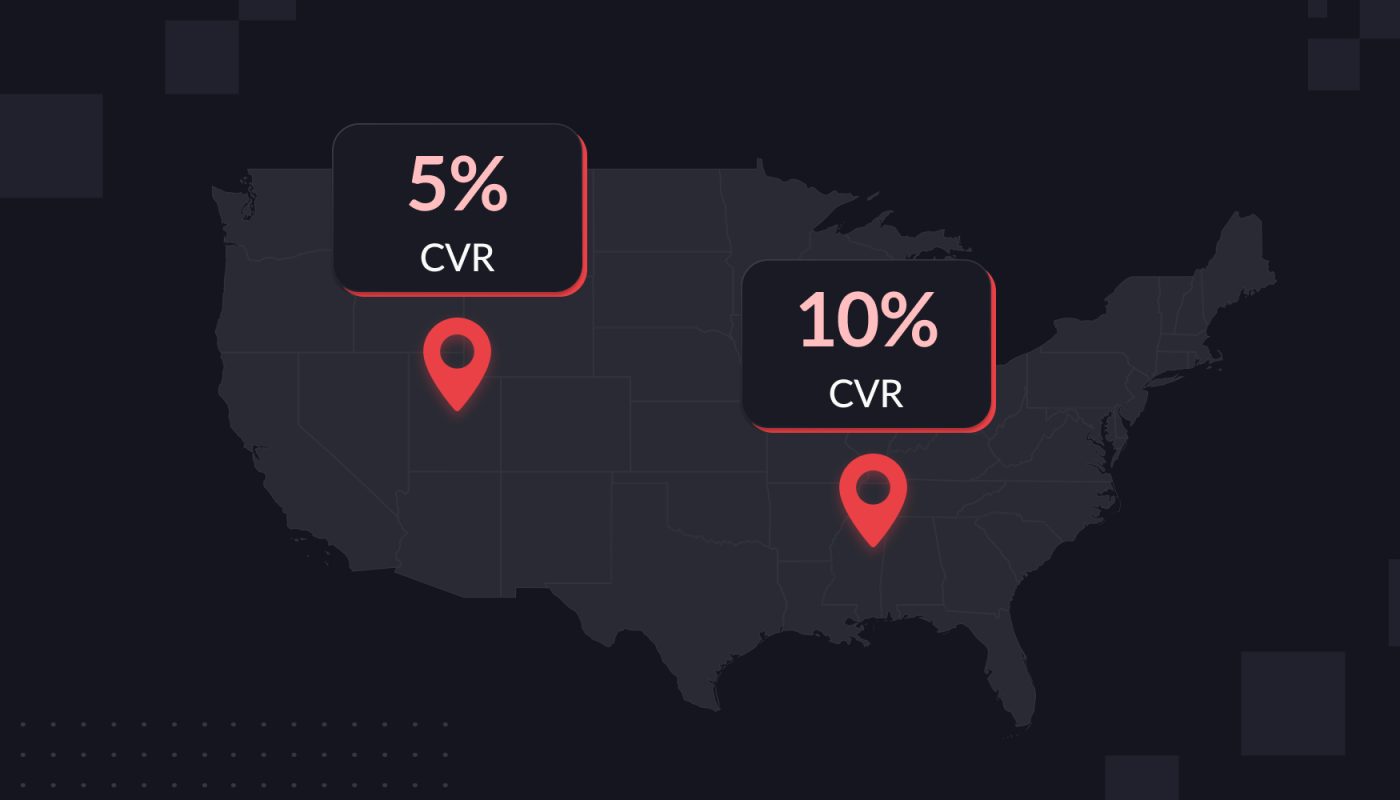There comes a point in the lives of most advertisers when they want to segment shoppers geographically.
Why? Let’s start simple. Say you’re selling heavy-duty thermal coats. You probably don’t want to spend a lot of money on DSP ads that reach people who live in warm climates. It makes sense to want to run ads only in certain geographic regions.
Or, further up the complexity ladder, maybe you want to advertise differently based on the makeup of a certain region.
- If you know a certain region has a high Customer Long-Term Value (CLTV), you might be willing to spend more money advertising to people in that region.
- You might change your ad creatives based on the region. Advertise a discount on San Francisco Giants jerseys to people in Northern California, for instance, or Utah Jazz jerseys to those in Utah.
Geo-targeting is not a universal feature. When you run Sponsored Products and Sponsored Brands ads on Amazon, you can’t geo-target your ads. You also probably don’t need to. Because these ads largely show up in search results, you can already be assured that the shopper is interested in your product.
It’s the more awareness-focused ads—like DSP ads—where you start to see the benefits of geo-targeting capabilities come in.
What geo-targeting capabilities are available on Amazon?
For the most part, you can only geo-target your ads if you are using DSP.
There’s one small exception. Technically, you can narrow down your Sponsored Display ads to certain geographies, but that’s only the case if you’re a non-endemic advertiser. Geo-targeting is not available for SD ads if you sell on Amazon.
With that out of the way, let’s talk about the geo-location capabilities in Amazon DSP.
In Amazon DSP, you can narrow down your custom audiences based on:
- State
- City
- Media market
- Zip code
You set geo locations at the Line Item level. You can either include or exclude audiences based on geo-location. Why do it?
Customize your creatives. These geographic features are helpful for big-spending advertisers that want to run distinctive campaigns depending on the location. Maybe you have a special offer that is only available in certain regions, or you want to tailor your creatives to each region.
Eliminate irrelevant audiences. Geographic exclusions, meanwhile, could be useful if there are certain areas of the country where you don’t want to be spending a lot on awareness ads.
Let’s return to the winter coat example—you maybe don’t need to run winter coat ads to people in Key West.
Non-endemic advertisers especially benefit from this. Think about chain stores, for example: If you’re a bank without a branch in Texas, there’s no reason to advertise loans to people in Texas. So you would want to make heavy use of geographic exclusions.
Are my ads actually performing differently based on geography?
Sure, running different creatives across different geographies might sound appealing, but you first want to figure out if it’s even worth your time.
If your ads perform roughly equally well across the country, for instance, there’s no point investing in geographic segmentations.
So how do you find out if your ads are performing differently from state to state or zip code to zip code? That’s where Amazon Marketing Cloud comes in. In Amazon Marketing Cloud, you can run a simple query to map out your ad performance across locations.
In fact, Intentwise Explore, our platform that supercharges AMC, has a query just for this. You’ll see your unique reach, total conversions, and conversion rates, all of which are broken down by state, country, and media market.
Analyze the results, and see if there are actually big differences in your ad performance across regions. That tells you it might be worth creating a geographic specific strategy.
A note of caution: Aggregation thresholds
If you do want to map out your performance geographically, you have to be careful of something called aggregation thresholds. Essentially, an aggregation threshold is the minimum number of shoppers who can show up in your query results for the full data to surface.
Aggregation thresholds are set for privacy reasons. If there are too few shoppers in your results, Amazon won’t show you full data, for fear it might jeopardize shopper identities.
Because zip codes are so identifiable, Amazon sets a high aggregation threshold for them. That means your query might not run unless you broaden your location fields (like comparing shoppers by state instead of by zip code), or if you are a huge brand with many shoppers in every zip code.
To make sure your query runs, make sure you have an AMC domain expert on staff who can anticipate and avoid aggregation threshold errors before they happen. Intentwise can help with this, too.







